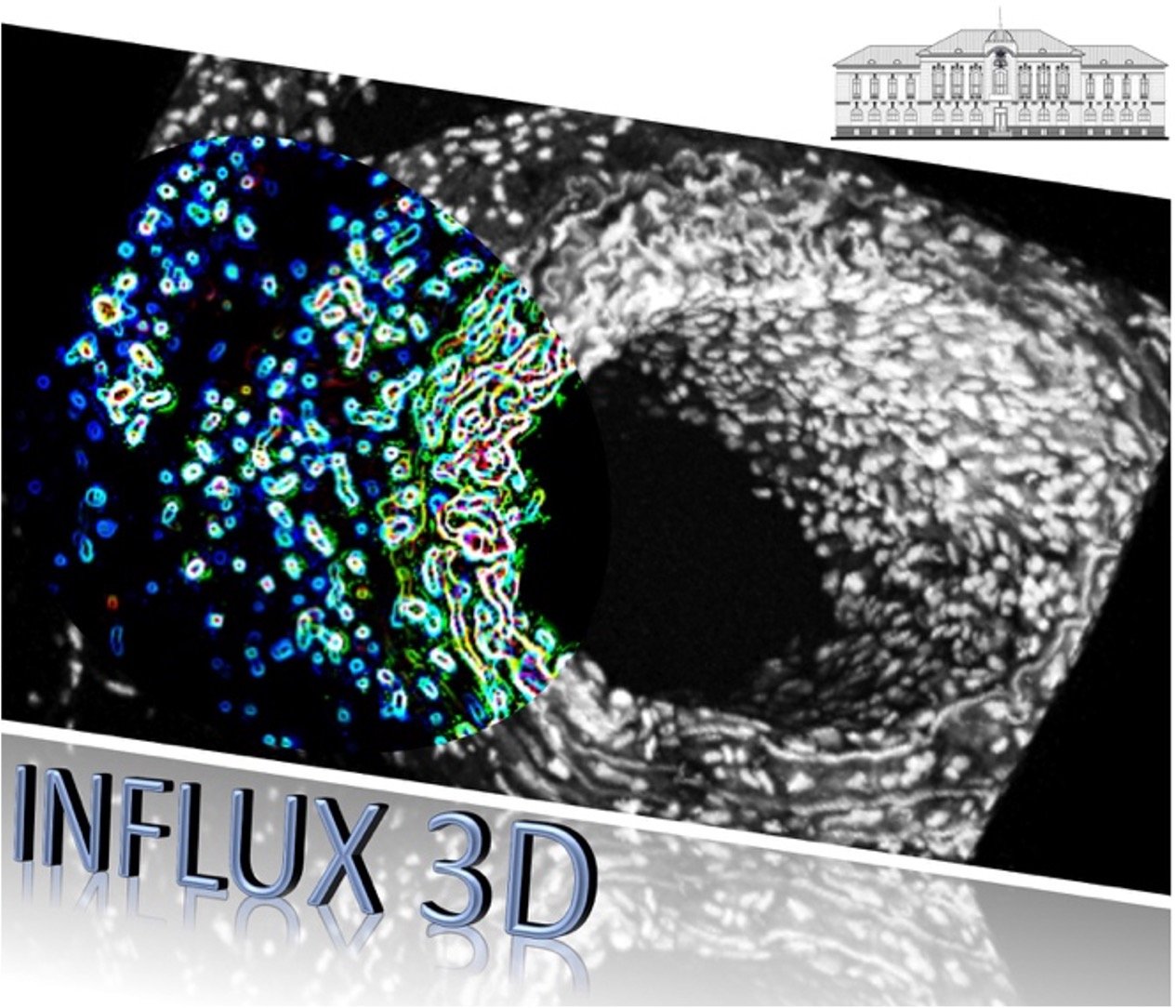Investigation of Tissular Extracellular Matrix by Automatised 3D Tissue Reconstruction

INFLUX3D (PN-III-P4-PCE-2021-1680)
Despite the huge progress in the last decades, the treatment of cardiovascular diseases lacks in many aspects, since cardiovascular diseases represent are still the main cause of death in develop countries. This is due in part to the controversial data resulting from experimental research, which vary depending on groups and protocols, but also do to lack in methods to analyze such complex data resulting from each experiment. The project offers a solution for standardization and automatisation of analysis of experimental data in fundamental research for cardiovascular diseases. Within this project, we plan to develop a software for 3D Reconstruction specially but not restricted to cardiovascular organs (heart and vessels), and automatic and standardised analysis of inflammatory cells, new formed blood vessels, fibroblasts, smooth muscle cells. From our knowledge, our employed approach is a novel concept and strategy, representing a radical development of traditional optical imaging processing. Images obtain by microscopy during experiments contain a very small section of the organ, which sometimes is out of the context. The pathological processes have a high degree of complexity, which cannot be seen in a small organ piece, but should be considered as wall. This represents the main problem for the current scientific community. By automatically recreating the 3D organ morphology, integrating all the staining and showing the interrelation between all the on-going pathological processes in place, without many human and material resources, we will bring a significant contribution in the cardiovascular research field for future more efficient and reliable animal experiments. Moreover, by development of machine learning-based image analysis system, all information about the quantitative investigation of morphologic and molecular information from previous experiences will be considered. Thus, we expect to find new tissular features, which cannot be visible, measurable or analyzed by humans. In this way, we align the experimental research with the current regulation of European Union to reduce, refine and replace animal experiments.